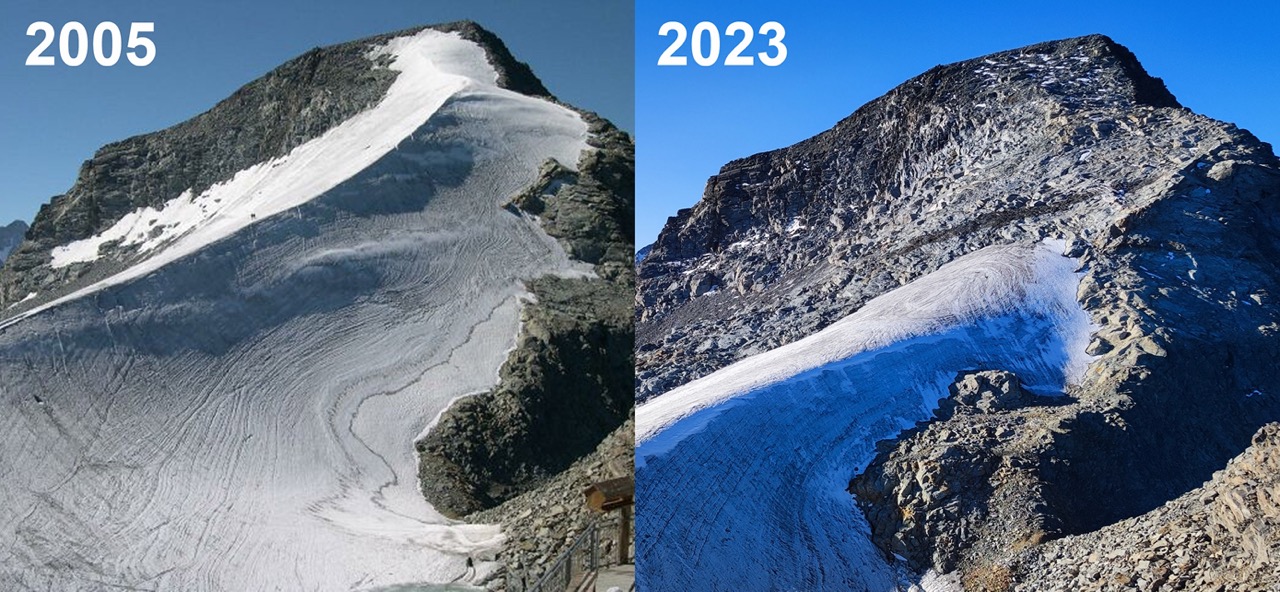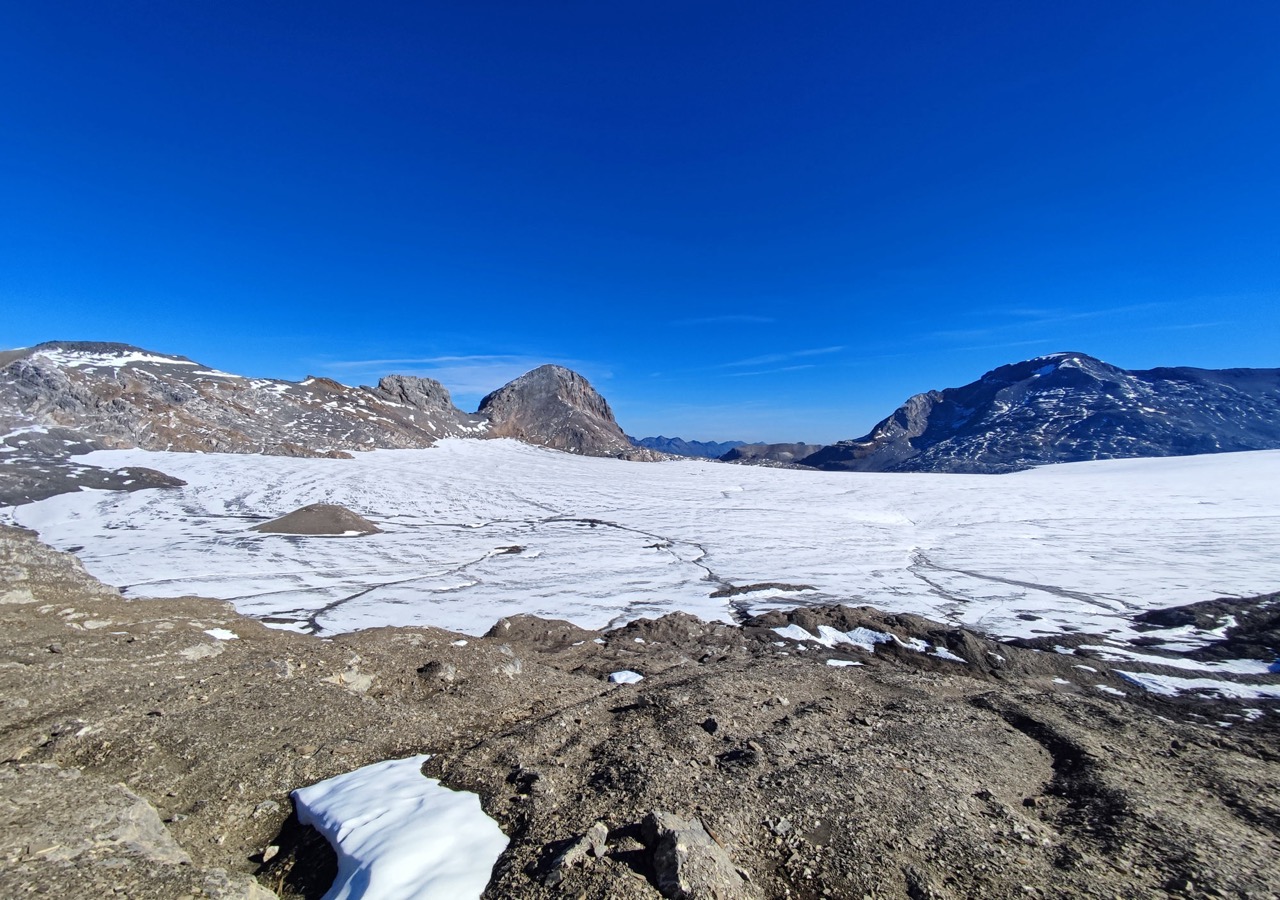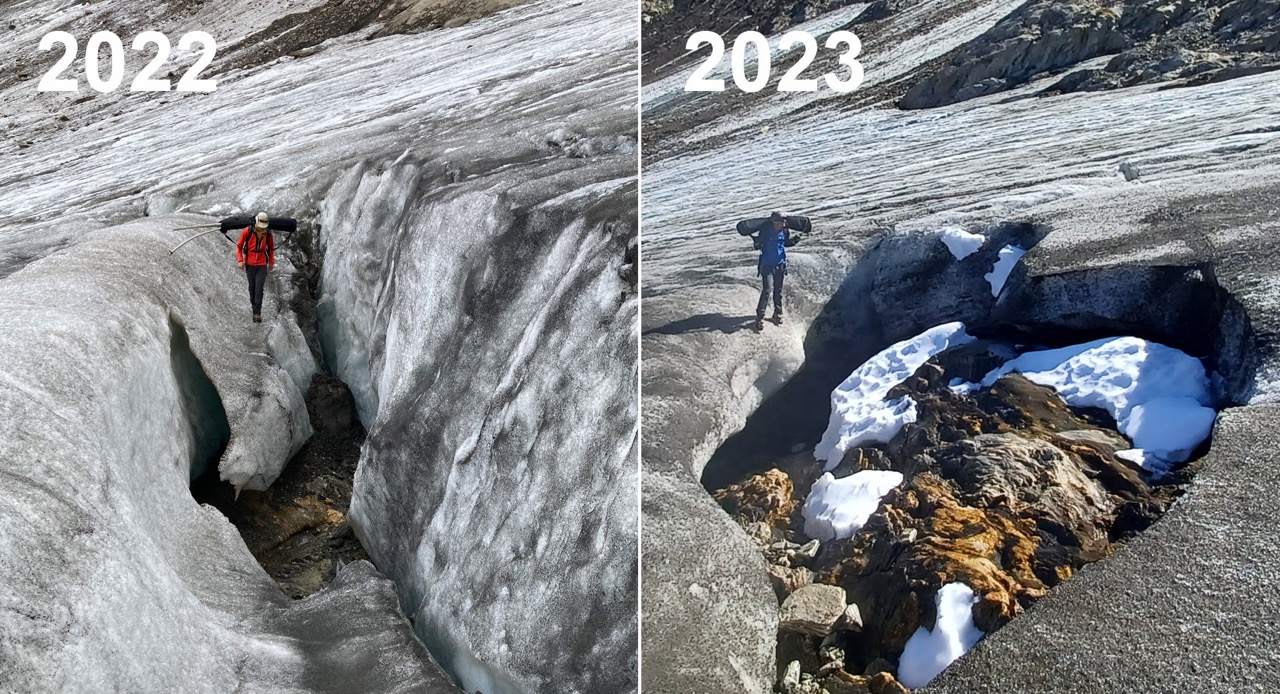Two catastrophic years obliterate 10% of Swiss glacier volume
One extreme year follows another. Glaciers in Switzerland lost 6% of their volume in 2022. However, 2023 saw 4% destroyed, representing the second largest decline since measurements began. The Swiss Commission for Cryosphere Observation of the Swiss Academy of Sciences reported that a total of 10% of the ice volume disappeared in only two years.
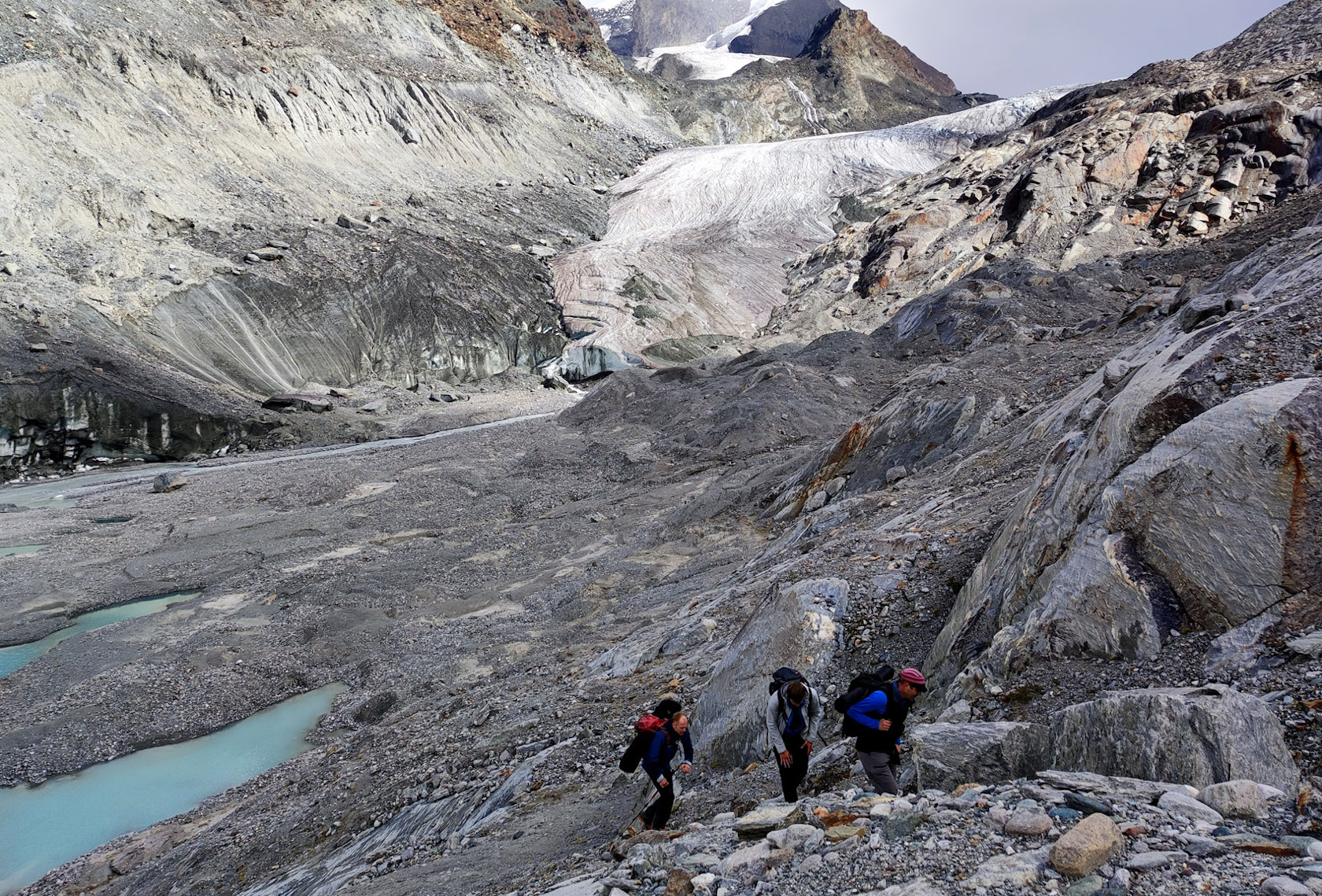
Cover photo: GIUZ staff members Diego Wasser, Gabriele Bramati and Andreas Linsbauer below the tongue of the Findel Glacier (VS). The recession of the glacier has uncovered a large valley consisting of glacial debris and dead ice. (Photo: M. Huss)
Swiss glaciers are melting at a rapidly increasing rate. The acceleration is dramatic, with as much ice being lost in only two years as was the case between 1960 and 1990. The two extreme consecutive years have led to glacier tongues collapsing and the disappearance of many smaller glaciers. For example, measurements of the St. Annafirn glacier in the canton of Uri had to be suspended as a result.
This massive loss of ice is the result of a winter with very low volumes of snow and high temperatures during the summer. The melting of glaciers affected the whole of Switzerland, with glaciers in southern and eastern Switzerland melting almost as severely as in the record year of 2022. Melting of several metres was measured in southern Valais and the Engadin valley at a level above 3200 m, an altitude at which glaciers had until recently preserved their equilibrium. The average ice thickness loss here is up to 3 metres (e.g. the Gries Glacier in Valais, the Basòdino Glacier in the canton of Ticino and the Vadret Pers glacier system in Grisons) and is considerably higher than the values recorded in the hot summer of 2003. The situation between the Bernese Oberland and Valais is less dramatic (e.g. the Aletsch Glacier in Valais and Plaine Morte Glacier in the canton of Bern), as more snow lay here during the winter. Nevertheless, a loss of over 2 metres of the average ice thickness is extremely high.
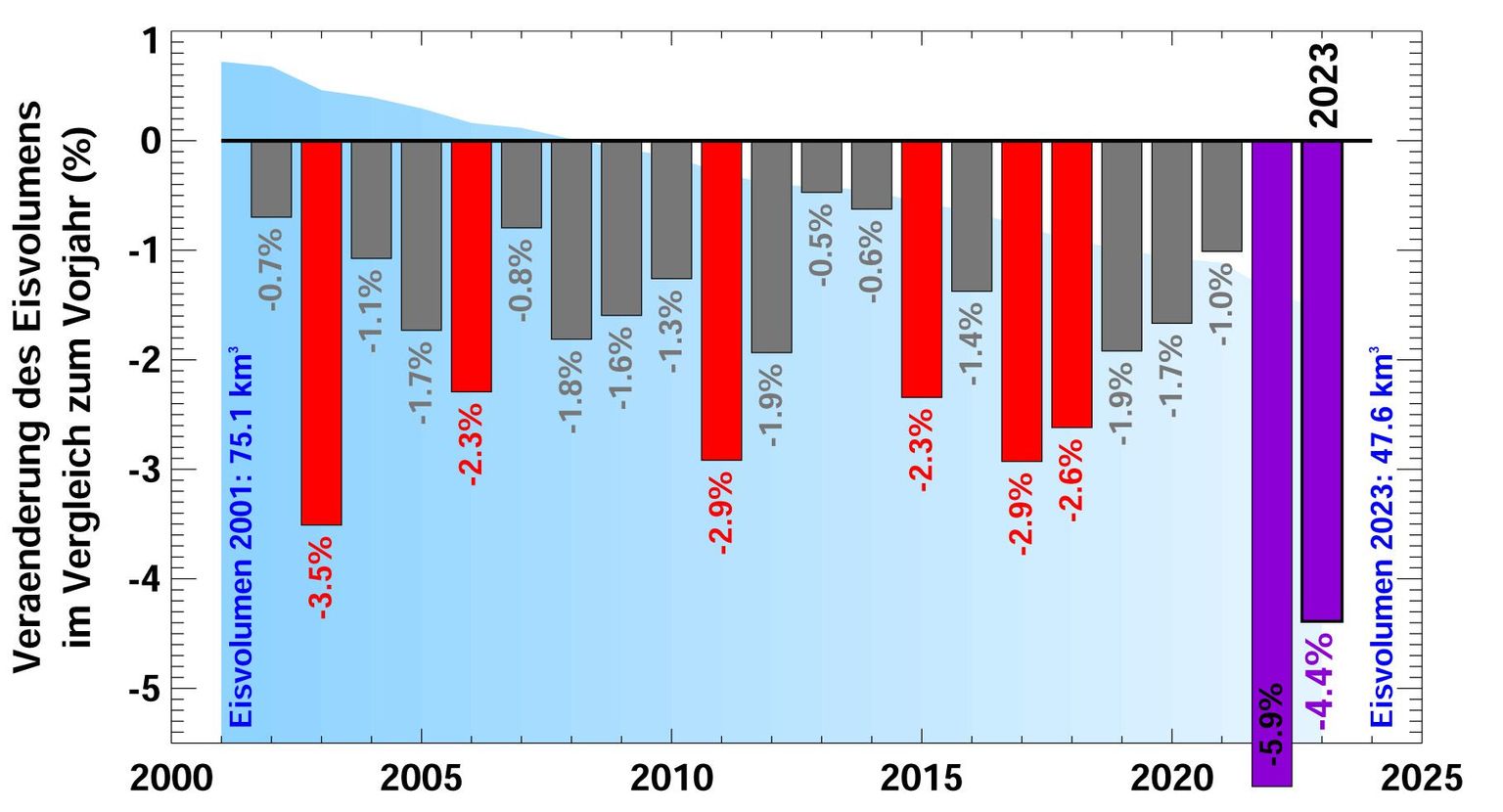
Record low snow depths in winter
Barely any precipitation was evident in the winter of 2022 / 2023 on both sides of the Alps, and temperatures were very high. As a consequence, considerably less snow than usual was evident at all stations. Conditions at a level above 1000 m stand out in February and the beginning of March. Snow depths measured in the first half of February were in the main somewhat greater than in the winters of 1964, 1990 or 2007, which were characterised by low snowfalls. However, snow levels fell to a new record in the second half of February, reaching only about 30% of the long-term average. More than half the automated stations above 2000 m with a minimum of 25 years of measurement series also indicated new record minimum levels.
The situation normalised briefly in spring, but a dry and extremely warm June meant that snow melted 2-4 weeks earlier than usual. The third-warmest summer since measurements began and a record high zero-degree line at times, which continued into September, were responsible for individual summer snowfalls generally melting very rapidly, which did not help the situation on the glaciers.



